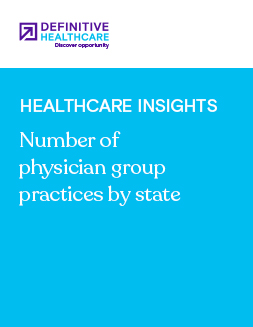Healthcare Insights
Top home health billing codes of 2021
When a person undergoes a major surgery or procedure that requires extensive therapy and constant medical attention, they may be able to choose where and how they recover and receive treatment. For some, the assurance that a medical expert is always nearby and immediately available may sway them into staying in a hospital or nursing home.
However, even a day or two at a hospital or nursing home can cost thousands of dollars. Some patients may not have the money to cover these costs, or they may just prefer the freedom that comes with care received at their home.
For these reasons (and a few others below), home health care has become a popular alternative to traditional care settings. Home health care primarily includes skilled nursing care and physical or occupational therapy.
Looking at HCPCS codes, we can determine the most common procedures performed in a home health setting. The top 10 are listed below.
| Rank | HCPCS code | HCPCS description | # of procedures | Total charges | Explore dataset |
|---|---|---|---|---|---|
| 1 | T1019 | Personal care services, per 15 minutes, not for an inpatient or resident of a hospital, nursing facility, ICF/MR or IMD | 18,167,937 | $2,099,130,054 | Explore |
| 2 | G0299 | Direct skilled nursing services of a registered nurse (RN) in the home health or hospice setting, each 15 minutes | 17,314,442 | $3,718,794,228 | Explore |
| 3 | G0151 | Services performed by a qualified physical therapist in the home health or hospice setting, each 15 minutes | 12,628,867 | $3,049,268,914 | Explore |
| 4 | G0300 | Direct skilled nursing services of a license practical nurse (LPN) in the home health or hospice setting, each 15 minutes | 7,541,850 | $1,669,423,911 | Explore |
| 5 | G0156 | Services of home health/hospice aide in home health or hospice settings, each 15 minutes | 6,143,743 | $550,024,021 | Explore |
| 6 | Q5001 | Hospice or home health care provided in the patient's home/residence | 4,564,679 | $99,193,990 | Explore |
| 7 | G0152 | Services performed by a qualified occupational therapist in the home health or hospice setting, each 15 minutes | 4,465,882 | $1,104,504,728 | Explore |
| 8 | S5125 | Attendant care services; per 15 minutes | 4,301,736 | $276,486,796 | Explore |
| 9 | G0157 | Services performed by a qualified physical therapist assistant in the home health or hospice setting, each 15 minutes | 3,865,956 | $898,239,657 | Explore |
| 10 | S9131 | Physical therapy; in the home, per diem | 3,699,094 | $726,142,947 | Explore |
Fig. 1 Data is from the Definitive Healthcare LongTermCareView product. Data is accurate as of April 2022.
What was the top procedure code in 2021?
The top home health billing code of 2021 was T1019, which details an array of miscellaneous personal care services provided in 15-minute intervals. These services include activities of daily living such as bathing, dressing, preparing meals and more. This procedure was performed more than 18 million times and equated to more than $2 billion in charges.
Other HCPCS codes like G0299 and G0300 detail specific skilled nursing services including observation, assessment and evaluation of the patient. Additional functions like educating and training parents, guardians and nonprofessional caregivers also fall under these codes.
HCPCS codes G0151, G0152 and G0157 deal with the administration of physical or occupational therapy in 15-minute intervals.
In total, the top 10 HCPCS codes account for over 82 million procedures and $14 billion in charges.
What is home health care?
Home health care refers to short-term rehabilitative care administered to patients in their own homes. Care is often provided to Medicare beneficiaries or other select patients through a home health agency. These organizations connect patients with physicians who can provide skilled nursing care and physical or occupational therapy.
Why are so many patients using home health care?
Home health care is an increasingly popular alternative for specific patients who don’t want to or otherwise can’t receive treatment in a doctor’s office. Four benefits of home health care are:
-
More convenient and less expensive for all patients including people living with disabilities or chronic conditions
-
A more personal experience for the patient with a healthcare worker providing full and undivided attention
-
Safer for patients with compromised immune systems or who are otherwise at-risk of contracting healthcare associated infections
-
Potentially more comprehensive. Healthcare professionals can possibly deliver a more detailed diagnosis and treatment plan with visibility into their patients’ daily lives and environment
You can learn more about home health care and how COVID-19 impacted it by reading our blog: The growing demand for at-home care.
Learn more
Healthcare Insights are developed with healthcare commercial intelligence from the Definitive Healthcare platform. Want even more insights? Start a free trial now and get access to the latest healthcare commercial intelligence on hospitals, physicians, and other healthcare providers.



